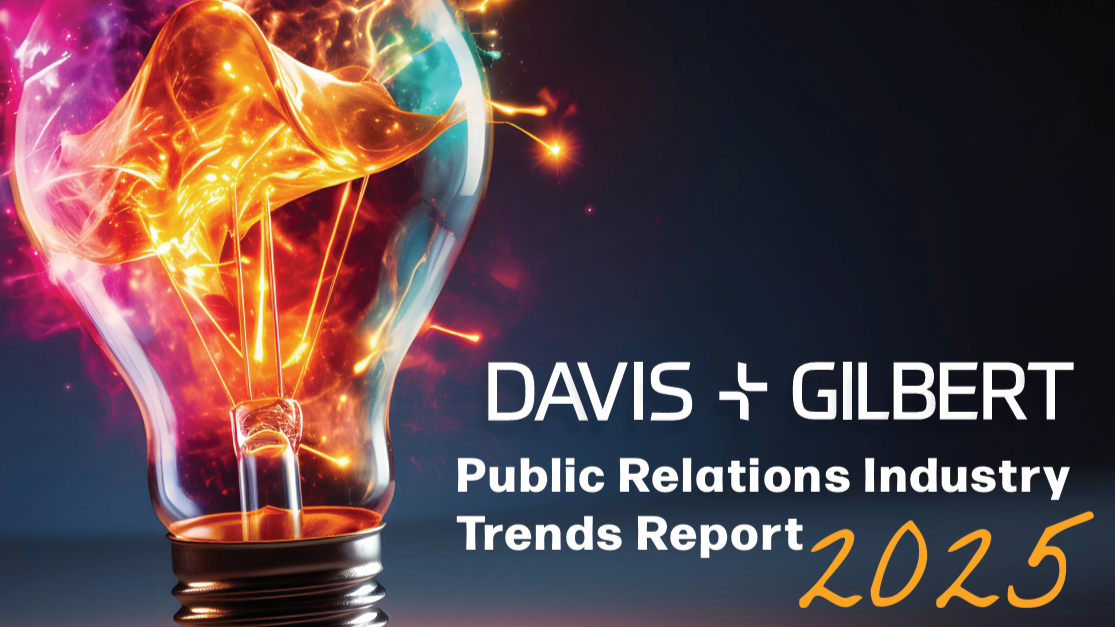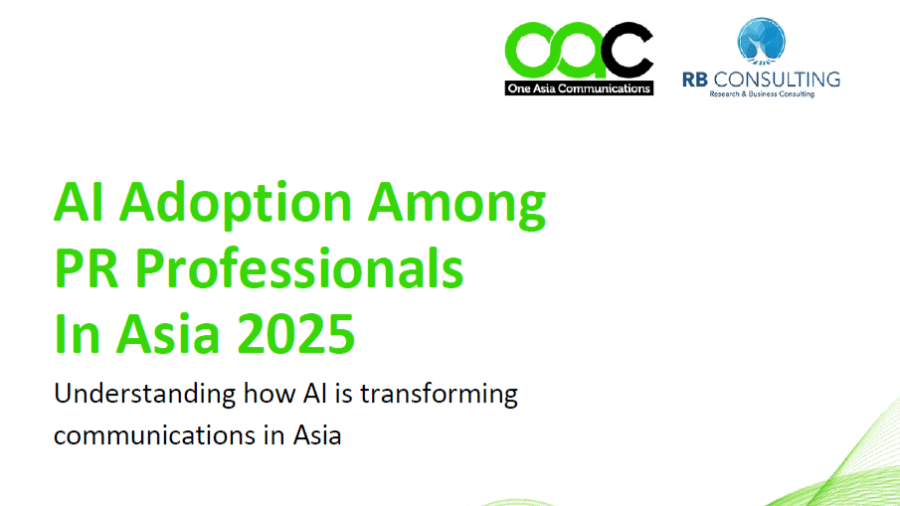New York law firm, Davis+Gilbert, has released its 13th Annual Public Relations Industry Trends Report for 2025. The report presents insights from 181 PR firms across specialities and geographies, of which 68 per cent are from North America and the rest sourced globally.
The report highlights key areas of misalignment between strategy and execution and offers recommendations to close performance gaps. Firms that will thrive are those that navigate smarter talent management, establish clearer AI policies, and engage with clients more effectively, aligning internal practices with external realities.
Key findings include:
Cautious financial outlook and slowdown in M&A activity
After years of steady growth, the report notes that PR firms are now facing economic uncertainty, shifting client priorities, and increased competition.
50 per cent of firms expect to increase revenue and 44 per cent expect to increase profits in 2025 - the lowest expected annual percentage increase in revenue and profits since 2021.
Bigger firms with more than 100 employees expect to increase both revenue and profit more than any other firm size.
62 M&A deals have been consummated as of 15th October 2025. This is 17 fewer compared to the same period last year.
In terms of clients' views towards AI, 11 per cent of firms noted that their clients are actively requesting AI integration, while 63 per cent said their clients are cautious, but open to AI integration. The rest reported clients that are either concerned or unaware.
Staffing strategies and DEI
Driven by the need to stay competitive and address new skill sets and salary expectations, 37 per cent of firms expect to spend more than 60 per cent of net revenue on compensation. More firms are using layoffs, not replacing departing employees, and freelancers to align staffing needs with revenue.
Despite pressure from the political environment and slowed hiring, 76 per cent of firms reported no change in their DEI initiatives. Firms that did change their DEI initiatives mostly continued select programmes with adjusted scope or rebranded under broader initiatives.
Misalignment between strategy and execution
The report found that less than half of firms have comprehensive guidelines in place when 99 per cent of firms are reporting AI usage.
Staff training, which could address top concerns including difficulty growing top-line revenue and difficulty maintaining or increasing profit margins, significantly declined in 2025, with training provided across management and presentation skills dropping 10-15 per cent compared to 2024.
Industry's future direction
Only 4 per cent of firms reported being very optimistic - a sharp decline from 70 per cent in 2024. At the same time, 14 per cent describe their outlook as anxious, a figure that has tripled over the past five years.
Ranked by order of importance, firms' biggest concerns for next year are:
The report highlights key areas of misalignment between strategy and execution and offers recommendations to close performance gaps. Firms that will thrive are those that navigate smarter talent management, establish clearer AI policies, and engage with clients more effectively, aligning internal practices with external realities.
Key findings include:
Cautious financial outlook and slowdown in M&A activity
After years of steady growth, the report notes that PR firms are now facing economic uncertainty, shifting client priorities, and increased competition.
50 per cent of firms expect to increase revenue and 44 per cent expect to increase profits in 2025 - the lowest expected annual percentage increase in revenue and profits since 2021.
Bigger firms with more than 100 employees expect to increase both revenue and profit more than any other firm size.
62 M&A deals have been consummated as of 15th October 2025. This is 17 fewer compared to the same period last year.
- 47 per cent of deals involve independent buyers.
- 27 per cent of respondents said they would buy one or more firms in the next 12 months, up from 22 per cent last year.
- 19 per cent said they would sell their firm in the next 12 months, down from 28 per cent last year.
- The top three specialities of firms that sold in 2025 were integrated / full service, healthcare / life sciences, and public affairs.
- 79 per cent of respondents across different firm sizes now use AI for written content creation.
- 75 per cent rely on it for note-taking and meeting summaries.
- Only one per cent of firms report not using AI at all.
- Besides using third-party platforms, 32 per cent of firms are also investing in AI proprietary tools.
In terms of clients' views towards AI, 11 per cent of firms noted that their clients are actively requesting AI integration, while 63 per cent said their clients are cautious, but open to AI integration. The rest reported clients that are either concerned or unaware.
Staffing strategies and DEI
Driven by the need to stay competitive and address new skill sets and salary expectations, 37 per cent of firms expect to spend more than 60 per cent of net revenue on compensation. More firms are using layoffs, not replacing departing employees, and freelancers to align staffing needs with revenue.
Despite pressure from the political environment and slowed hiring, 76 per cent of firms reported no change in their DEI initiatives. Firms that did change their DEI initiatives mostly continued select programmes with adjusted scope or rebranded under broader initiatives.
Misalignment between strategy and execution
The report found that less than half of firms have comprehensive guidelines in place when 99 per cent of firms are reporting AI usage.
Staff training, which could address top concerns including difficulty growing top-line revenue and difficulty maintaining or increasing profit margins, significantly declined in 2025, with training provided across management and presentation skills dropping 10-15 per cent compared to 2024.
Industry's future direction
Only 4 per cent of firms reported being very optimistic - a sharp decline from 70 per cent in 2024. At the same time, 14 per cent describe their outlook as anxious, a figure that has tripled over the past five years.
Ranked by order of importance, firms' biggest concerns for next year are:
- Client budgets remaining flat or decreasing
- Difficulty in growing top-line revenue
- Slow decision-making by prospective clients
- Difficulty in maintaining or increasing profit margin
- Keeping up with technological advancements / digital transformation.



